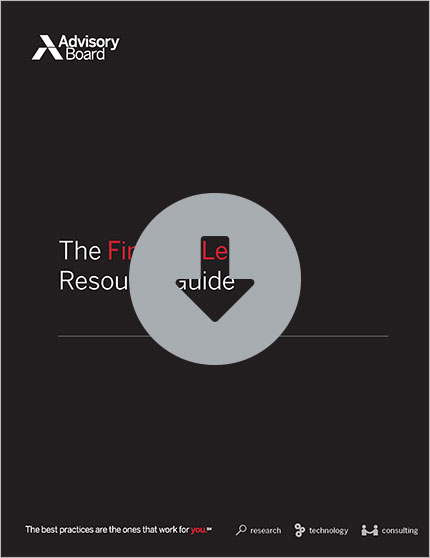Auto logout in seconds.
Continue LogoutEditor's note: This popular story from the Daily Briefing's archives was republished on Nov. 12, 2018.
Read Advisory Board's take: How can financial leaders apply these lessons to health care?
Debt delinquency can be costly for both consumers and companies—but with simple, inexpensive modifications to automated phone calls, debt collectors can noticeably reduce debt delinquency, Nina Mazar, a professor of marketing and co-director of the Susilo Institute for Ethics in the Global Economy at the Questrom School of Business at Boston University, writes for Harvard Business Review.
Household credit card debt has reached an "all-time high," Mazar writes, and can result in late fees, higher interest rates, and even bankruptcy. Medical debt also continued to be a growing concern in the United States: According to NBC Chicago, nearly one in five U.S. residents have delinquent medical debt—and that is a leading cause of personal bankruptcy today.
But Mazar, whose analysis focuses on credit card debt, notes there may be a cost-effective way for "companies to help consumers make good on their intentions, benefiting both parties."
The simple changes that can reduce debt delinquency
Most credit card companies use interactive voice recordings (IVRs) to remind customers in the early stages of debt delinquency that they need to pay. These phone calls typically include a short reminder that says, "[Customer name], you have a past due amount. If you have already paid, press 1. If you are going to pay within the next three days, press 2. If you want to speak to an agent, press 3."
However, these calls assume there are only two types of delinquent customers: Those who cannot pay and those who forgot, Mazar writes. And that might not always be true.
"[W]e know from many other domains of life that people can have the best of intentions but fail to follow through on them," she writes, adding that many people "intend to save more money, live a healthier lifestyle, or start working on our taxes early instead of at the last minute," but "life gets in the way."
With that idea in mind, Mazar and her colleagues Daniel Mochon and Dan Ariely decided to tweak IVRs to better speak to this category of customer.
They created two additional IVR phone calls: one that expanded the payment window options for customers planning to pay to include options for 24, 36, 48, and 72 hours, while the second call reinforced the customer's commitment.
For example, the first IVR call said, "'If you are going to pay within the next 24 hours, press 1,'" continuing on with 36, 48, and 72 hours. The other modified prompt said, "'[Customer name], you have committed to pay [total amount due] within the next 24 hours. Press 1 to confirm your commitment to this pledge.'"
The researchers then randomly assigned around 50,000 people one of the three IVRs and found that the prompt that gave a concrete timeline but did not ask for a follow-up commitment increased the customers' likelihood of paying by 2.26 percentage points and led them to pay 0.23 days sooner. The addition of the prompt on top of the concrete timeframe increased customers' likelihood of paying by 2.54 percentage points and led them to pay 0.51 days sooner.
The average amount of delinquent debt was about $142, which meant the revised prompt with the specific timeline and the follow-up commitment prompt translated into an immediate revenue of over $56,000, Mazar writes.
Not only are these interventions cost-effective, Mazar writes, but they "scale easily, and they reduce more-costly later-stage collection efforts, which can include letters, live agent calls, and collection agency fees. Meanwhile, consumers benefit from avoiding the costs associated with debt delinquency" (Mazar, Harvard Business Review, 7/26; Coffey, NBC Chicago, 3/12).
Advisory Board's take

Robin Brand, Senior Director, Research
What I love about this study is that I can easily see applications in health care. We know already through our research that organizations can do a lot to reduce delinquent medical collections by being as upfront with patients as possible about what they'll be expected to pay. We've found that the best way to set up a patient for financial success is by offering a pre-service bill that clearly lists what the patient is responsible for paying. This helps to alleviate fear or uncertainty and gives patients more time to plan for expenses. It's also what patients want. When we recently surveyed 1,000 patients who had undergone elective surgery, respondents ranked a pre-service bill as the service offering most likely to improve their financial experience. And this remained true across all demographics including age, income, insurance type and education.
Yet even if organizations are transparent about costs, we know that many patients still have trouble acting upon their intention to pay medical bills. Having both financial counselors and payment plans available to patients are other critical requirements of a best-in-class patient financial infrastructure, and this is where lessons from the study may come in.
If financial counselors were charged with explicitly asking exactly when patients will be able to pay expenses—and offered concrete options for possible payment plan timeframes—patients may be more likely to translate their intentions to pay into action.
The added layer of accountability and expectation would likely benefit both providers and patients. For providers, this could mean lower days in accounts receivable, less spending on long-term collections, and a decrease in bad debt. And for patients, setting more explicit payment expectations would mean less worry and concern, a more realistic payment time frame for their particular financial situation, and less hassle dealing with collections.
In the meantime, learn what we discovered about the ideal patient financial journey, and what providers must do at each step of the process to meet patient needs and bolster collections. Download our slide decks for part one and part two of navigating the patient financial journey.
Then, make sure to learn more about the best practices we've discovered in improving revenue cycle performance, in the finance leader's resource guide.
Don't miss out on the latest Advisory Board insights
Create your free account to access 1 resource, including the latest research and webinars.
Want access without creating an account?
You have 1 free members-only resource remaining this month.
1 free members-only resources remaining
1 free members-only resources remaining
You've reached your limit of free insights
Become a member to access all of Advisory Board's resources, events, and experts
Never miss out on the latest innovative health care content tailored to you.
Benefits include:
You've reached your limit of free insights
Become a member to access all of Advisory Board's resources, events, and experts
Never miss out on the latest innovative health care content tailored to you.
Benefits include:
This content is available through your Curated Research partnership with Advisory Board. Click on ‘view this resource’ to read the full piece
Email ask@advisory.com to learn more
Click on ‘Become a Member’ to learn about the benefits of a Full-Access partnership with Advisory Board
Never miss out on the latest innovative health care content tailored to you.
Benefits Include:
This is for members only. Learn more.
Click on ‘Become a Member’ to learn about the benefits of a Full-Access partnership with Advisory Board
Never miss out on the latest innovative health care content tailored to you.

